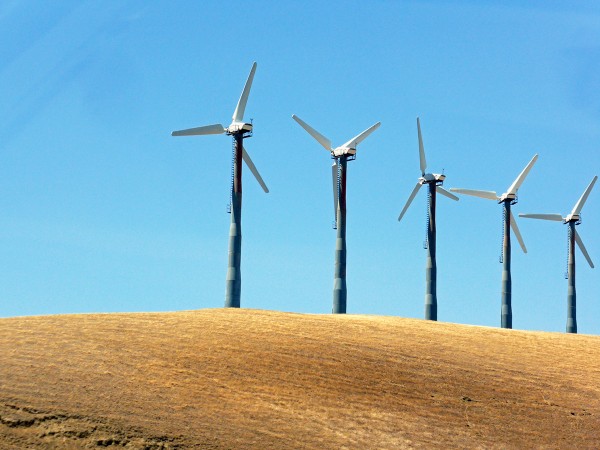 The Governor of California, Jerry Brown, has issued an executive order to cut greenhouse gas emissions 40% from 1990 levels by 2030 (a 44% cut on 2012 levels). This matches the target set by the EU. It is tougher than that of the US administration, which has set a target of reducing emissions in the range of 26 to 28 percent below 2005 levels by 2025.
The Governor of California, Jerry Brown, has issued an executive order to cut greenhouse gas emissions 40% from 1990 levels by 2030 (a 44% cut on 2012 levels). This matches the target set by the EU. It is tougher than that of the US administration, which has set a target of reducing emissions in the range of 26 to 28 percent below 2005 levels by 2025.
The former Governor of California, Arnold Schwarzenegger, had previously set a target of reducing emissions 80% below 1990 levels by 2050. Brown’s new target can be seen as an interim step toward meeting that longer-term goal.
There are several means by which it is planned to meet the Californian targets. These include:
a focus on zero- and near-zero technologies for moving freight, continued investment in renewables including solar roofs and distributed generation, greater use of low-carbon fuels including electricity and hydrogen, stronger efforts to reduce emissions of short-lived climate pollutants (methane, black carbon and fluorinated gases), and further efforts to create liveable, walkable communities and expansion of mass transit and other alternatives to travelling by car.
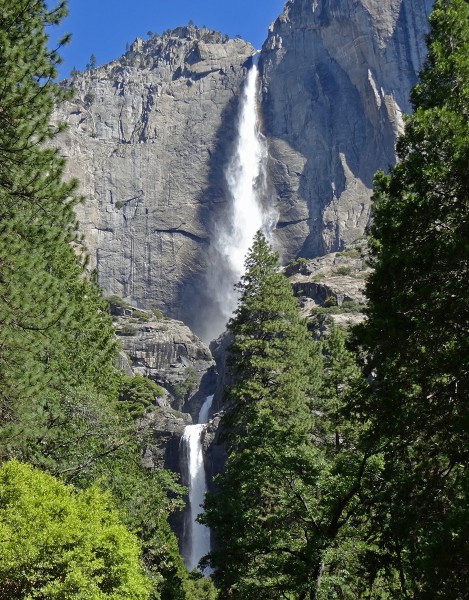 Some of these will be achieved through legislation, after consultations with various stakeholders. But a crucial element in driving down emissions is the California’s carbon trading scheme. This is a cap-and-trade system, similar to the EU’s Emissions Trading Scheme.
Some of these will be achieved through legislation, after consultations with various stakeholders. But a crucial element in driving down emissions is the California’s carbon trading scheme. This is a cap-and-trade system, similar to the EU’s Emissions Trading Scheme.
The cap-and-trade rules came into effect on January 1, 2013 and apply to large electric power plants and large industrial plants. In 2015, they will extend to fuel distributors (including distributors of heating and transportation fuels). At that stage, the program will encompass around 360 businesses throughout California and nearly 85 percent of the state’s total greenhouse gas emissions.
Under a cap-and-trade system, companies must hold enough emission allowances to cover their emissions, and are free to buy and sell allowances on the open market. California held its first auction of greenhouse gas allowances on November 14, 2012. This marked the beginning of the first greenhouse gas cap-and-trade program in the United States since the group of nine Northeastern states in the Regional Greenhouse Gas Initiative (RGGI), a greenhouse gas cap-and-trade program for power plants, held its first auction in 2008.
Since January 2014, the Californian cap-and-trade scheme has been linked to that of Quebec in Canada and discussions are under way to link it with Ontario too. Also California is working with other west-coast states/provinces, Oregon, Washington and British Columbia, to develop a co-ordinated approach to greenhouse gas reductions
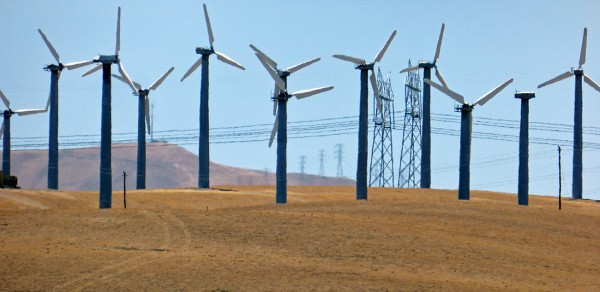 To achieve sufficient reductions in emissions, it is not enough merely to have a cap-and-trade system which, through trading, encourages an efficient reduction in emissions. It is important to set the cap tight enough to achieve the targeted reductions and to ensure that the cap is enforced.
To achieve sufficient reductions in emissions, it is not enough merely to have a cap-and-trade system which, through trading, encourages an efficient reduction in emissions. It is important to set the cap tight enough to achieve the targeted reductions and to ensure that the cap is enforced.
In California, emissions allowances are distributed by a mix of free allocation and quarterly auctions. Free allocations account for around 90% of the allocations, but this percentage will decrease over time. The total allowances will decline (i.e. the cap will be tightened) by 3% per year from 2015 to 2020.
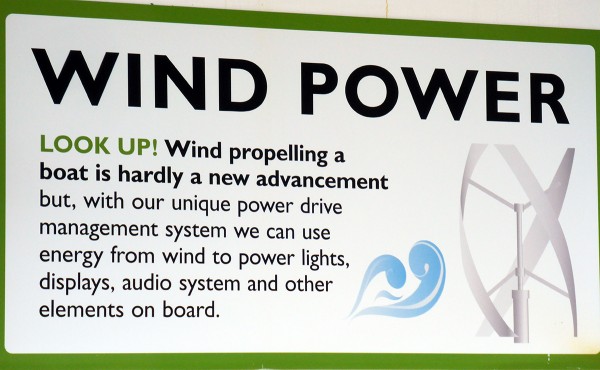 At present the system applies to electric power plants, industrial plants and fuel distributors that emit, or are responsible for emissions of, 25,000 metric tons of carbon dioxide equivalent (CO2e) per year or more. The greenhouse gases covered are the six covered by the Kyoto Protocol ((CO2, CH4, N2O, HFCs, PFCs, SF6), plus NF3 and other fluoridated greenhouse gases.
At present the system applies to electric power plants, industrial plants and fuel distributors that emit, or are responsible for emissions of, 25,000 metric tons of carbon dioxide equivalent (CO2e) per year or more. The greenhouse gases covered are the six covered by the Kyoto Protocol ((CO2, CH4, N2O, HFCs, PFCs, SF6), plus NF3 and other fluoridated greenhouse gases.
Articles
California governor orders aggressive greenhouse gas cuts by 2030 Reuters. Rory Carroll (29/4/15)
California’s greenhouse gas emission targets are getting tougher Los Angeles Times, Chris Megerian and Michael Finnegan (29/4/15)
Jerry Brown sets aggressive California climate goal The Desert Sun, Sammy Roth (29/4/15)
California’s Brown Seeks Nation-Leading Greenhouse Gas Cuts Bloomberg, Michael B Marois (29/4/15)
California sets tough new targets to cut emissions BBC News, (29/4/15)
California’s New Greenhouse Gas Emissions Target Puts Obama’s To Shame New Republic, Rebecca Leber (29/4/15)
Governor Brown Announces New Statewide Climate Pollution Limit in 2030 Switchboard, Alex Jackson (29/4/15)
Cap-and-trade comes to Orego Watchdog, Chana Cox (29/4/15)
Cap and trade explained: What Ontario’s shift on emissions will mean The Globe and Mail, Adrian Morrow (13/4/15)
California’s Forests Have Become Climate Polluters Climate Central, John Upton (29/4/15)
States Can Learn from Each Other On Carbon Pricing The Energy Collective, Kyle Aarons (28/4/15)
Executive Order
Governor Brown Establishes Most Ambitious Greenhouse Gas Reduction Target in North America Office of Edmund G. Brown Jr. (29/4/15)
Frequently Asked Questions about Executive Order B-30-15: 2030 Carbon Target and Adaptation California Environmental Protection Agency: Air Resources Board (29/4/15)
Californian cap-and-trade scheme
Cap-and-Trade Program California Environmental Protection Agency: Air Resources Board (29/4/15)
California Cap and Trade Center for Climate and Energy Solutions (January 2014)
Questions
- Explain how a system of cap-and-trade, such as the Californian system and the ETS in the EU, works.
- Why does a cap-and-trade system lead to an efficient level of emissions reduction?
- How can a joint system, such as that between California and Quebec, work? Is it important to achieve the same percentage pollution reduction in both countries?
- What are countries coming to the United Nations Climate Change conference in Paris in November 2015 required to have communicated in advance?
- How might game theory be relevant to the negotiations in Paris? Are the pre-requirements on countries a good idea to tackle some of the ‘gaming’ problems that could occur?
- Why is a cap-and-trade system insufficient to tackle climate change? What other measures are required?
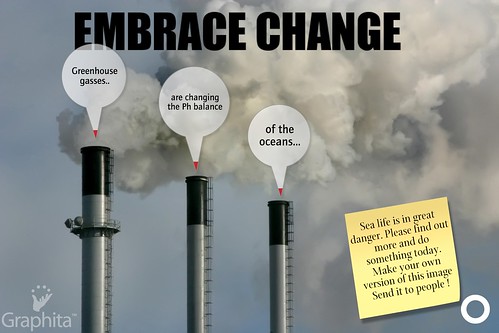 No market is perfect and when the market mechanism fails to deliver an efficient allocation of resources, we say the market fails and hence there is justification for some government intervention. From a monopolist dominating an industry to a manufacturing firm pumping out pollution, there are countless examples of market failure.
No market is perfect and when the market mechanism fails to deliver an efficient allocation of resources, we say the market fails and hence there is justification for some government intervention. From a monopolist dominating an industry to a manufacturing firm pumping out pollution, there are countless examples of market failure.
The Guardian is creating a guide to climate change, covering areas from politics to economics. The problem of climate change has been well documented and this blog considers a particular issue – the case for climate change or the environment as a market failure. In many cases just one market failure can be identified, for example an externality or a missing market. However, one of the key problems with climate change is that there are several market failures: externalities in the form of pollution from greenhouse gases; poor information; minimal incentives; the problem of the environment as a common resource and the immobility of factors of production, to name a few. Each contributes towards a misallocation of resources and prevents the welfare of society from being maximised.
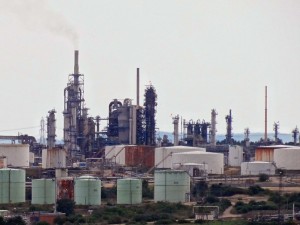 When a market fails, intervention is justified and economists argue for a variety of policies to tackle the above failures. In a first-best world, there is only one market failure to tackle, but in the case of the environment, policy must be designed carefully to take into account the fact that there are numerous failings of the free market. Second-best solutions are needed. Furthermore, as the problem of climate change will be felt by everyone, whether in a developed or a developing country, international attention is needed. The two articles below are part of the Guardian’s ultimate climate change guide and consider a huge range of economic issues relating to the problem of environmental market failure.
When a market fails, intervention is justified and economists argue for a variety of policies to tackle the above failures. In a first-best world, there is only one market failure to tackle, but in the case of the environment, policy must be designed carefully to take into account the fact that there are numerous failings of the free market. Second-best solutions are needed. Furthermore, as the problem of climate change will be felt by everyone, whether in a developed or a developing country, international attention is needed. The two articles below are part of the Guardian’s ultimate climate change guide and consider a huge range of economic issues relating to the problem of environmental market failure.
Why do economists describe climate change as a ‘market failure’? Guardian, Grantham Research Institute and Dunca Clark (21/5/12)
What is the economic cost of climate change? Guardian (16/2/11)
Questions
- What is meant by market failure?
- What are the market failures associated with the environment and climate change? In each case, explain how the issue causes an inefficient allocation of resources and thus causes the market to fail? You may find diagrams useful!
- What is meant by the first-best and second-best world?
- What does a second-best solution aim to do?
- Using diagrams to help your explanation, show how a tax on pollution will have an effect in a first best world, where the only market failure is a negative externality and in a second best world, where the firm in question is also a monopolist.
- What solutions are there to the problem of climate change? How effective are they likely to be?
- Does the need to tackle climate change require international co-operation? Can you use game theory to help your explanation?!
UK Parliament’s Environmental Audit Committee has concluded that the European Emissions Trading Scheme (ETS) is not working as it should. Thanks to a total emissions cap that is too low in a time of recession, the carbon price has fallen. The result is that there is no longer sufficient of an incentive for firms to invest in green technology. As the Financial Times article (below) reports:
The committee has urged the government to consider other measures, such as a floor price for carbon dioxide emissions, which would provide industries with greater certainty over the price of carbon and help to ensure the system of pricing was effective.
The MPs said a price of €100 per tonne of CO2 could be necessary to encourage investment, compared with current prices of about €13.
So is the committee correct? Or is a low price of carbon merely temporary, with firms realising that the price will rise as the European economy recovers? The following articles examine the issues.
Carbon markets failing, say British MPs Financial Times, Fiona Harvey (8/2/10)
Carbon prices are going the wrong way Independent, David Prosser (8/2/10)
U.K. Lawmakers Call for Intervention in Carbon Market BusinessWeek, Catherine Airlie and Ewa Krukowska (8/2/10)
UK should press EU for tighter carbon caps Reuters, Nina Chestney (8/2/10)
MPs propose carbon tax to boost green investment Guardian, Terry Macalister (8/2/10)
As UK Cap and Trade Falters, Government May Prop Up Carbon Prices Environmental Leader (9/2/10)
EU ETS intervention call howled down CarbonPositive (9/2/10)
The report
The role of carbon markets in preventing dangerous climage change Environmental Audit Committee
Questions
- Explain how the ETS works.
- What determines the price of carbon in the ETS? Why has it fallen in recent months?
- Compare the alternative policy approaches for encouraging green investment.
- What are the advantages and disadvantages of setting a floor price for carbon permits? What would be the effect on the balance of demand for and supply of premits?
- Discuss whether the total number of permits allocated should be reduced (i.e. the cap tightened).
- Compare the relative merits of giving the allocation of permits away with auctioning them.
- Compare the relative merits of a cap-and-trade system with green taxes.
The traditional macroeconomic issues are well-known: unemployment, inflation, economic growth and the balance of payments. However, the environment, and specifically climate change, have become increasingly important objectives for the global economy. Over recent months, many countries have announced new policies and measures to tackle climate change.
The costs of not tackling climate change are well-documented, but what about the costs of actually tackling it? Why is a changing climate receiving such attention and what are the economics behind this problem? The articles below consider this important issue.
Tougher climate target unveiled BBC News (16/10/08)
Brown proposes £60 billion climate fund BBC News (26/6/09)
EU says tackling climate change will cost global economy €400 billion a year Irish Times, Frank McDonald (26/6/09)
Obama makes 11th-hour climate change push Washington AFP, Ammenaul Parisse (25/6/09)
UK to outline emission cut plans BBC News (26/6/09)
What’s new in the EU: EU examines impact of climate change on jobs The Jerusalem Post, Ari Syrquin (25/6/09)
Climate change: reducing risks and costs The Chronicle Herald, Jennifer Graham (25/6/09)
Obama to regulate ‘pollutant’ CO2 BBC News (17/4/09)
Billions face climate change risk BBC News (6/5/07)
Obama vows investment in science BBC News (27/4/09)
Japan sets ‘weak’ climate target BBC News (10/6/09)
Questions
- Why is climate change an example of market failure?
- Apart from imposing limits on emissions, what other interventionist policies could be used? What are the advantages and disadvantages of each of them?
- According to the EU, the cost of tackling climate change is very high. So, why are we doing it? See if you can carry out a cost-benefit analysis!
- Why is climate change presenting a problem for insurance companies? Can it be overcome?
- Why is finance such an issue between developed and developing countries in relation to tackling climate change?
- What is the likely impact of climate changing policies on the labour market? Will we be able to adapt in the current economic crisis?
Until changes in their governments, both the USA and Australia were unwilling to sign up to the Kyoto Treaty on climate change. But things are changing. In both countries, cap and trade bills have been proposed by their administrations (see A changing climate at the White House). In the USA, President Obama’s bill would see the imposition of carbon quotas aimed at achieving a reduction in greenhouse gas emissions by 2020 of 17 per cent, with emissions trading allowing an efficient means of achieving this. In Australia, Kevin Rudd’s Labor government plans to introduce quotas and emissions trading in 2011 to achieve a 25 per cent reduction in greenhouse gases by 2020.
But are there lessons to be learned from the European Emissions Trading scheme? The following articles look at some of the issues.
Cap-and-trade off Houston Chronicle (23/5/09)
US climate change bill passes key hurdle Telegraph (22/5/09)
Obama climate change bill defies Republicans to pass key committee Guardian (22/5/09)
Cap and Trade Debate CNN (video) (22/5/09)
Historic emissions trading scheme bills tabled Sydney Morning Herald (14/5/09)
A pattern behind fire and flood Sydney Morning Herald (25/5/09)
Interview with Australian Climate Change Minister, Penny Wong ABC (21/5/09)
Can Copenhagen achieve much? ABC PM programme (includes link to audio) (20/5/09)
Plunging price of carbon may threaten investment Independent (9/2/09)
EU ETS emissions fall 3% in 2008 Environmental Expert (18/5/09)
European investors call for carbon trading revamp businessGreen (20/5/09)
The carbon scam 21st Century Socialism (19/5/09)
Economy and the environment: growing pains Guardian (17/5/09)
See also
European Union Emissions Trading Scheme Defra: emissions trading
Questions
- Discuss the merits and problems of cap-and-trade systems for reducing carbon emissions in an efficient and effective way.
- Is the price of carbon a useful indicator of the success or otherwise of cap-and-trade schemes to reduce greenhouse gas emissions?
- In what ways does the current recession (a) aid, and (b) hinder the introduction of tougher schemes to tackle global warming?
 The Governor of California, Jerry Brown, has issued an executive order to cut greenhouse gas emissions 40% from 1990 levels by 2030 (a 44% cut on 2012 levels). This matches the target set by the EU. It is tougher than that of the US administration, which has set a target of reducing emissions in the range of 26 to 28 percent below 2005 levels by 2025.
The Governor of California, Jerry Brown, has issued an executive order to cut greenhouse gas emissions 40% from 1990 levels by 2030 (a 44% cut on 2012 levels). This matches the target set by the EU. It is tougher than that of the US administration, which has set a target of reducing emissions in the range of 26 to 28 percent below 2005 levels by 2025. Some of these will be achieved through legislation, after consultations with various stakeholders. But a crucial element in driving down emissions is the California’s carbon trading scheme. This is a cap-and-trade system, similar to the EU’s Emissions Trading Scheme.
Some of these will be achieved through legislation, after consultations with various stakeholders. But a crucial element in driving down emissions is the California’s carbon trading scheme. This is a cap-and-trade system, similar to the EU’s Emissions Trading Scheme. To achieve sufficient reductions in emissions, it is not enough merely to have a cap-and-trade system which, through trading, encourages an efficient reduction in emissions. It is important to set the cap tight enough to achieve the targeted reductions and to ensure that the cap is enforced.
To achieve sufficient reductions in emissions, it is not enough merely to have a cap-and-trade system which, through trading, encourages an efficient reduction in emissions. It is important to set the cap tight enough to achieve the targeted reductions and to ensure that the cap is enforced. At present the system applies to electric power plants, industrial plants and fuel distributors that emit, or are responsible for emissions of, 25,000 metric tons of carbon dioxide equivalent (CO2e) per year or more. The greenhouse gases covered are the six covered by the Kyoto Protocol ((CO2, CH4, N2O, HFCs, PFCs, SF6), plus NF3 and other fluoridated greenhouse gases.
At present the system applies to electric power plants, industrial plants and fuel distributors that emit, or are responsible for emissions of, 25,000 metric tons of carbon dioxide equivalent (CO2e) per year or more. The greenhouse gases covered are the six covered by the Kyoto Protocol ((CO2, CH4, N2O, HFCs, PFCs, SF6), plus NF3 and other fluoridated greenhouse gases.
